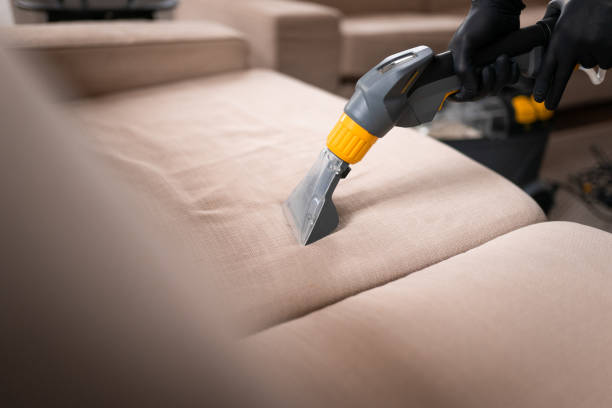 Are your favorite chairs and sofas starting to show signs of wear and tear? Does the thought of replacing them feel overwhelming or out of your budget? You’re not alone—many of us cherish our upholstered furniture, but time, spills, and daily use can leave them looking less than their best. Fortunately, there’s a world of possibilities in upholstery care and transformation that can breathe new life into your beloved pieces without the hefty price tag of replacement.
Are your favorite chairs and sofas starting to show signs of wear and tear? Does the thought of replacing them feel overwhelming or out of your budget? You’re not alone—many of us cherish our upholstered furniture, but time, spills, and daily use can leave them looking less than their best. Fortunately, there’s a world of possibilities in upholstery care and transformation that can breathe new life into your beloved pieces without the hefty price tag of replacement.
Assessing the Condition of Your Upholstery
Before diving into any upholstery refresh project, the first crucial step is to assess the condition of your upholstery thoroughly. This evaluation will guide your decisions on whether a deep clean, a simple repair, or a complete reupholstery is necessary.
Start by examining the fabric for stains, fading, or any signs of wear. If your upholstery is stained, consider the type of fabric; some materials respond well to spot cleaning, while others may require professional treatment. Look for frayed seams or loose threads, as these can indicate wear and may need stitching repair. If the fabric feels rough or has lost its original texture, it could benefit from a deep cleaning or a fabric refresher.
Next, check the underlying structure of the furniture. Gently press on the cushions and backrests to ensure there’s no excessive sagging or structural damage. If the cushions feel flat or lack support, you may need to replace the foam or add additional padding to restore comfort.
Additionally, take note of the furniture’s frame and legs. Cracks, wobbly legs, or loose joinery can compromise not only the aesthetics but also the functionality of your upholstered piece. Assessing these elements will help you determine the best course of action for giving your upholstery a new lease on life, whether it involves a simple clean, a few repairs, or a complete overhaul. By taking the time to understand the condition of your upholstery, you’ll set the foundation for a successful transformation that enhances both the beauty and longevity of your furniture.
Essential Cleaning Techniques for Upholstered Furniture
Upholstered furniture can be a beautiful centerpiece in your home, but over time, it can accumulate dust, stains, and wear, diminishing its charm. Revitalizing your upholstery doesn’t have to be a daunting task; with the right cleaning techniques, you can bring back its fresh, inviting appearance.
First and foremost, always check the manufacturer’s care label before starting any cleaning process. This will provide important information regarding the appropriate cleaning methods and materials that can be used without damaging the fabric.
For general maintenance, start with a thorough vacuuming. Using an upholstery attachment, gently remove dust, debris, and crumbs from the surface and crevices. This simple step not only enhances the look of your furniture but also helps prolong its life by preventing dirt buildup.
For spot cleaning, a mild solution of warm water and a few drops of dish soap can work wonders on everyday stains. Dampen a clean, white cloth with the solution and gently blot the stained area—never rub, as this can push the stain further into the fibers. Rinse the cloth with clean water and blot the area again to remove any soap residue. For tougher stains, consider using a specialized upholstery cleaner, following the instructions carefully.
In addition to these techniques, consider steam cleaning your upholstery at least once a year. This method not only deeply cleans but also refreshes the fabric’s appearance by removing embedded dirt and odors. If renting a steam cleaner, ensure that it’s suitable for your specific upholstery fabric.
Lastly, protect your investment by regularly treating your upholstery with a fabric protector. This creates a barrier against spills and stains, making it easier to clean up messes in the future.
By incorporating these essential cleaning techniques into your maintenance routine, you can ensure that your upholstered furniture retains its beauty and comfort for years to come.
Simple DIY Repairs to Extend the Life of Your Furniture
Upholstered furniture can be a centerpiece in your home, but over time, wear and tear can dull its charm. Fortunately, simple DIY repairs can breathe new life into your beloved pieces, extending their lifespan and enhancing their appearance. Start with small fixes, such as tightening loose screws or replacing worn-out legs. A sturdy foundation is essential for both comfort and aesthetics. If your upholstery has minor tears or frayed seams, don’t panic! You can easily patch these up with a needle and thread in a matching color. For a seamless finish, apply a fabric glue to hold the edges together before stitching.
Next, consider refreshing the fabric with a deep cleaning. Depending on the material, you can use a steam cleaner or a gentle upholstery cleaner to lift stains and odors, making your furniture look and smell new again. If your cushions are sagging, a quick fix is to replace the foam inserts. Measure the dimensions of your cushions, purchase new foam, and simply cut it to size. You can even add a layer of batting for extra softness and comfort.
Finally, accessorize your newly repaired furniture with stylish throw pillows or a cozy blanket. Not only do these add a pop of color and texture, but they also help disguise any imperfections, creating a polished look. With these simple DIY repairs, you can transform your upholstered furniture into a stunning focal point of your space, all while saving money and embracing your creativity.
Exploring Reupholstering Options: When and How to Do It
Reupholstering is a fantastic way to breathe new life into your furniture, allowing you to transform tired, worn pieces into stunning focal points in your home. But knowing when and how to tackle this project can be daunting. Here’s a guide to help you navigate the reupholstering journey with confidence.
**When to Reupholster**
Consider reupholstering when your furniture exhibits significant signs of wear and tear, such as frayed fabric, sagging cushions, or outdated patterns that no longer fit your style. If a piece holds sentimental value or is of good quality but looks tired, reupholstering can be a worthwhile investment. Additionally, if the frame of the furniture is sturdy and well-constructed, giving it a fresh look may be more cost-effective than purchasing new.
**How to Reupholster**
1. **Choose the Right Fabric:** Start by selecting a fabric that complements your existing décor while being durable enough to withstand everyday use. Consider materials like upholstery-grade cotton, linen, or synthetic blends that offer both style and durability.
2. **Gather Your Tools:** Equip yourself with essential tools such as a staple gun, scissors, upholstery foam (if needed), and a sewing machine (for more complex projects). A reliable fabric adhesive can also be handy for touch-ups.
3. **Prepare Your Furniture:** Remove any existing fabric, taking care to note how it was attached. This will serve as a guide for how to apply the new material. Inspect the underlying structure and make any necessary repairs to the frame or cushioning before proceeding.
4. **Cut and Attach Fabric:** Measure and cut your new fabric, leaving enough excess for folding over edges and securing underneath. Begin attaching the material at one corner, using your staple gun to secure it in place. Work your way around, ensuring the fabric is taut but not overly stretched, to maintain a smooth finish.
5. **Finishing Touches:** Once the fabric is secured, trim any excess and tuck in the edges neatly. Consider adding decorative elements like piping or fringe to elevate the overall look and add a touch of sophistication.
Reupholstering can be a rewarding DIY project that not only enhances your space but also gives you a sense of accomplishment. Whether you’re tackling a single chair or an entire sofa, remember to take your time and enjoy the process of giving your furniture a whole new identity.
Adding Accessories: Pillows and Throws to Refresh Your Look
When it comes to revitalizing your upholstered furniture, one of the simplest yet most impactful ways to transform your space is by adding carefully chosen accessories, such as pillows and throws. These elements not only enhance the visual appeal of your upholstery but also provide an opportunity to express your personal style.
Start by selecting a range of pillows in various shapes, sizes, and textures. Mixing and matching patterns—think florals with stripes or geometric designs with solid colors—can create a dynamic look that draws the eye. Opt for pillows with different fills; plush down and supportive foam offer comfort while also adding dimension to your furniture. Don’t forget about the fabric—soft velvets, cozy knits, or crisp cottons can all elevate the overall aesthetic.
Throws are another wonderful accessory to incorporate. Drape a beautifully textured throw over the arm of a chair or the back of a sofa to add warmth and color. Choose throws that complement or contrast with your upholstery; for instance, if you have a neutral-colored sofa, a vibrant throw can serve as a stunning focal point. Alternatively, if your upholstery is bold and colorful, a soft, solid throw can help balance the look.
Consider the season as well. In warmer months, light and airy fabrics with bright hues can bring a fresh, cheerful vibe to your space. As the weather turns cooler, heavier materials in rich, warm tones can create a cozy atmosphere. By simply adding and swapping out these accessories, you can easily refresh the look of your upholstery and make your space feel new again, all while reflecting your evolving style. So, go ahead and experiment with pillows and throws; the right choices can turn your furniture into a statement piece that invites comfort and conversation.
Conclusion: Embracing Your Transformed Space
As you step back and admire your newly transformed space, it’s essential to embrace the freshness that comes with revitalized upholstery. The process of updating your furniture not only breathes new life into your home but also reflects your evolving style and personality. The vibrant colors, updated textures, and carefully chosen patterns can create a welcoming atmosphere that resonates with warmth and comfort.
Remember, your space should be a sanctuary that inspires and rejuvenates you. By taking the time to refresh your upholstery, you’ve not only enhanced the aesthetic appeal but also made a thoughtful investment in your surroundings. As you sit back and enjoy the fruits of your labor, consider how the renewed look of your furniture can influence your overall mood and daily experiences.
So, whether you’ve opted for a bold statement piece or a subtle refresh, take pride in your creative choices. Your transformed space is more than just visually appealing; it’s a testament to your unique taste and commitment to loving where you live. Embrace this new chapter in your home, and let the revitalized environment inspire you to create even more beautiful memories within its walls!





Comments are closed